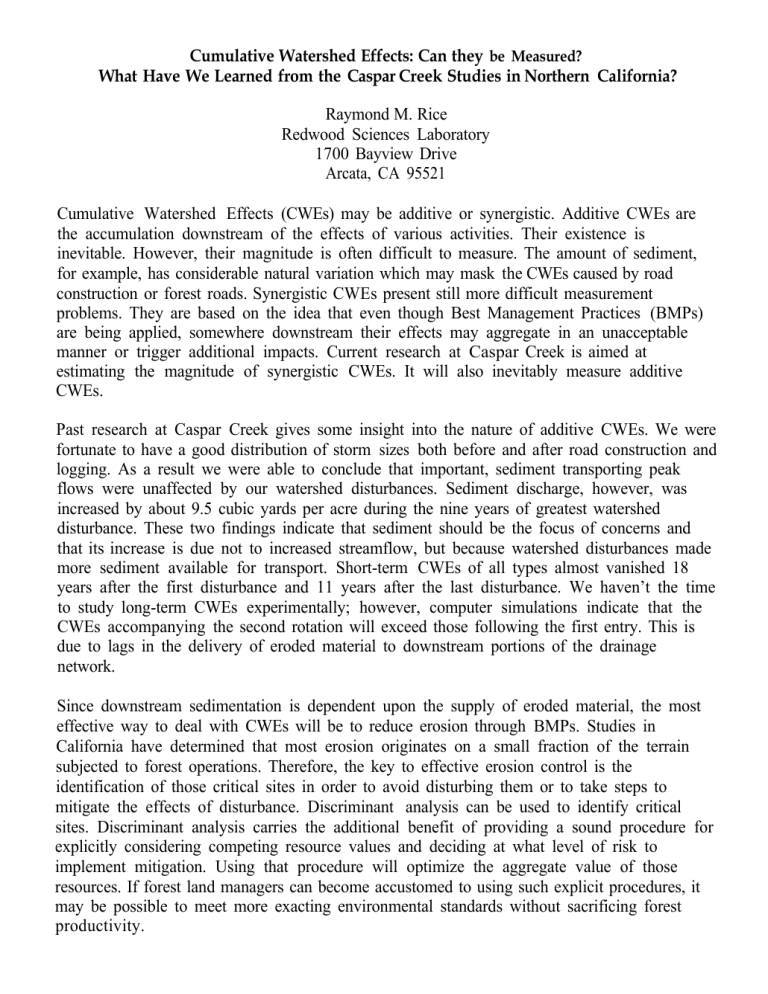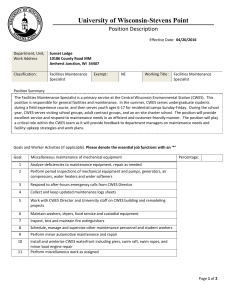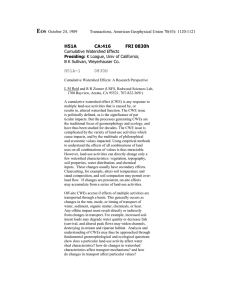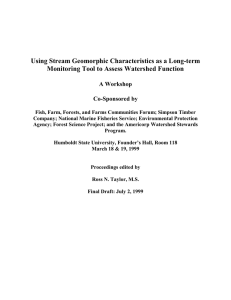Cumulative Watershed Effects: Can they

Cumulative Watershed Effects: Can they be Measured?
What Have We Learned from the Caspar Creek Studies in Northern California?
Raymond M. Rice
Redwood Sciences Laboratory
1700 Bayview Drive
Arcata, CA 95521
Cumulative Watershed Effects (CWEs) may be additive or synergistic. Additive CWEs are the accumulation downstream of the effects of various activities. Their existence is inevitable. However, their magnitude is often difficult to measure. The amount of sediment, for example, has considerable natural variation which may mask the CWEs caused by road construction or forest roads. Synergistic CWEs present still more difficult measurement problems. They are based on the idea that even though Best Management Practices (BMPs) are being applied, somewhere downstream their effects may aggregate in an unacceptable manner or trigger additional impacts. Current research at Caspar Creek is aimed at estimating the magnitude of synergistic CWEs. It will also inevitably measure additive
CWEs.
Past research at Caspar Creek gives some insight into the nature of additive CWEs. We were fortunate to have a good distribution of storm sizes both before and after road construction and logging. As a result we were able to conclude that important, sediment transporting peak flows were unaffected by our watershed disturbances. Sediment discharge, however, was increased by about 9.5 cubic yards per acre during the nine years of greatest watershed disturbance. These two findings indicate that sediment should be the focus of concerns and that its increase is due not to increased streamflow, but because watershed disturbances made more sediment available for transport. Short-term CWEs of all types almost vanished 18 years after the first disturbance and 11 years after the last disturbance. We haven’t the time to study long-term CWEs experimentally; however, computer simulations indicate that the
CWEs accompanying the second rotation will exceed those following the first entry. This is due to lags in the delivery of eroded material to downstream portions of the drainage network.
Since downstream sedimentation is dependent upon the supply of eroded material, the most effective way to deal with CWEs will be to reduce erosion through BMPs. Studies in
California have determined that most erosion originates on a small fraction of the terrain subjected to forest operations. Therefore, the key to effective erosion control is the identification of those critical sites in order to avoid disturbing them or to take steps to mitigate the effects of disturbance. Discriminant analysis can be used to identify critical sites. Discriminant analysis carries the additional benefit of providing a sound procedure for explicitly considering competing resource values and deciding at what level of risk to implement mitigation. Using that procedure will optimize the aggregate value of those resources. If forest land managers can become accustomed to using such explicit procedures, it may be possible to meet more exacting environmental standards without sacrificing forest productivity.
The 1990s - Challenging Our
Profession and Professionalism
Summaries of the
Proceedings
of the
1990 Western Forestry Conference
D
ECEMBER
2-5, 1990 C
OEUR
D
’ALENE
, I
DAHO
Western Forestry and Conservation Association
4033 S.W. Canyon Road l
Portland, Oregon 97221 l
503-226-4562








